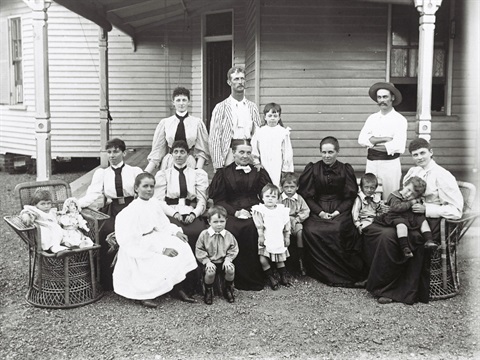Genealogy at home: Births, Births, Deaths and Marriages in Ireland
Published on 24 March 2020

Irish research has always been considered especially difficult and problematic for researchers for a number of reasons.
- The later date of when civil registration started in Ireland. Registration of non-Roman Catholic marriages began in Ireland in 1845, but the full registration system only came into operation in 1864, when all births, marriages and deaths began to be registered.
- The commonality of Irish surnames and Christian names. The convention of using patronymic naming eg O’Brian (son of Brian)
- The fact that many of the vital records were lost in the civil war in 1922
- The partitioning of the country into Northern Ireland and Southern Ireland in 1922
Online tutorials
Because Irish research is not straight forward, it is advisable to read a few of the tutorials and how-to documents which proliferate on the web. I have given links to some good starting points below.
The Fire of 1922
The Battle of Dublin (very interesting to read about) was a week of street battles in Dublin from 28 June to 5 July 1922 that marked the beginning of the Irish Civil War. On 14 April 1922, about 200 Anti-Treaty IRA militants occupied the Four Courts in Dublin, which was the home of the Public Records Office – the repository of the vital records of the country.The PRO housed many genealogical treasures including Irish census returns, originals wills dating to the 16th century, and more than 1,000 Church of Ireland parish registers filled with baptism, marriage and burial records.
Onthe night of 28 June / early hours of 29 June, the National Army commenced the bombardment of the building and several hours laterthere was a huge explosion, blowing to pieces one thousand years of Irish state and religious archives.
What was lost?
- The Irish Censuses of 1821, 1831, 1841, and 1851 were burned – only a few fragments survive.
- Just over half of all the Anglican Church of Ireland parishregisters deposited there in 1869.
- The majority of wills and testamentary records that had been proved in Ireland
- All pre-1900 documents from the legal courts, as were local government records for the same period.
- Nearly all export and trade records from the 18th to early 20th century
- Wills (although transcripts of many testamentary records survive)
What survived
Here’s a quick run-through of the main record collections used by Irish genealogy researchers that either survived the fire or were nowhere near the flames …..
- The 1901 and 1911 Irish census returns survive.
- So do all civil registration records.
- So do nearly half of all Church of Ireland parish registers (many clergymen had simply not sent their registers to Dublin).
- Baptism, marriage and burial records for Roman Catholics, Presbyterians and Methodists were not housed at the Public Records Office
- Griffiths Valuation – the primary source of land and property records for the middle of the 19th century is intact.
- Indexes to wills and probate bonds survive.
- So do a good number of local muster rolls, poll tax lists and other records dating back to the very early 1600s.
Civil Registration (post 1864)
Irish Civil Registration Indexes are online through several sources, including Findmypast and Ancestry. The largest, free collection is at FamilySearch.org which offers access to the indexes of births (1864-1958), marriages (1845-1958), and deaths (1864-1958). The maiden name of the mother is not included in the birth indexes, and there are no records for the six counties of Northern Ireland after 1921.
Ordering Certificates
Records from 1864 to 1922, for all Ireland, and from 1922 for the Republic are held at the Office of the Registrar General. Northern Irish records since 1922 are held at the GRONI (Government Records Office of Northern Ireland).
Pre 1864 Church Records
Through the 19th century about 85% of the population of Ireland were Roman Catholic, 5% were members of the Church of Ireland, and the remaining 10% consisted primarily of Presbyterians. Prior to the onset of civil registration in Ireland in 1864, the records of these churches are virtually the only sources for family information.
Searching these is not straight forward, but Ancestry and Findmypast provide access to the major data sets for these records.
Location is really important when using these records, so it is very helpful to have an idea of where your irish ancestors lived.
Irish Property Records
Because of the destruction of 19th-century census returns, surviving land and property records from the period have become significant for genealogical research. Two surveys, each covering the entire country of Ireland, are a rich source for genealogists:
- Tithe Applotment Books, 1823-1838
- Griffith’s Primary Valuation, 1848-1864
These records are available via Ancestry and Findmypast.